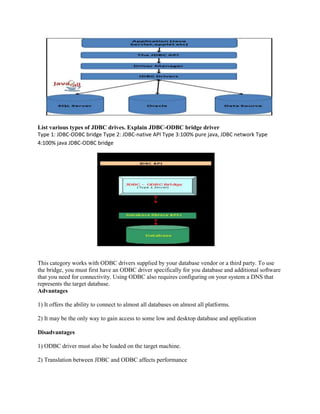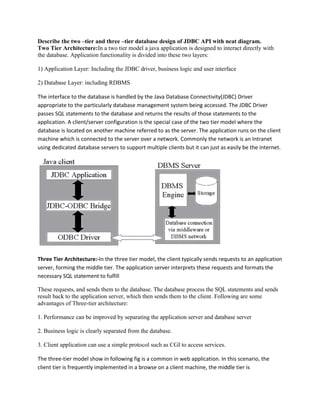The JDBC-ODBC bridge driver converts JDBC calls to ODBC calls so that Java programs can connect to databases for which native JDBC drivers do not exist. It allows connection to many databases but requires ODBC drivers and has performance overhead due to translation. Native JDBC drivers are preferred when available.
The two-tier database architecture has the Java application directly connecting to the database using a JDBC driver. The three-tier architecture separates the presentation, application and data tiers with the application server in the middle handling requests and communicating with the database server.



